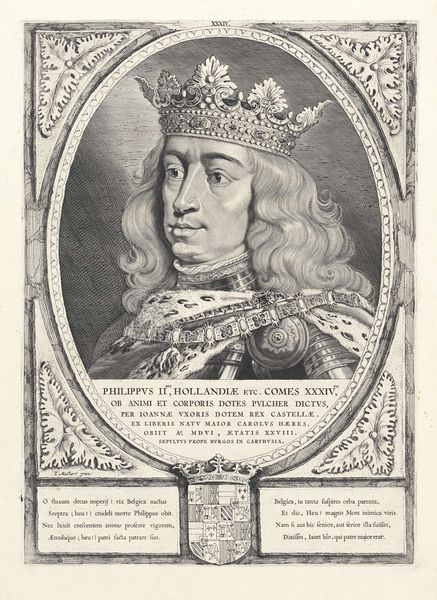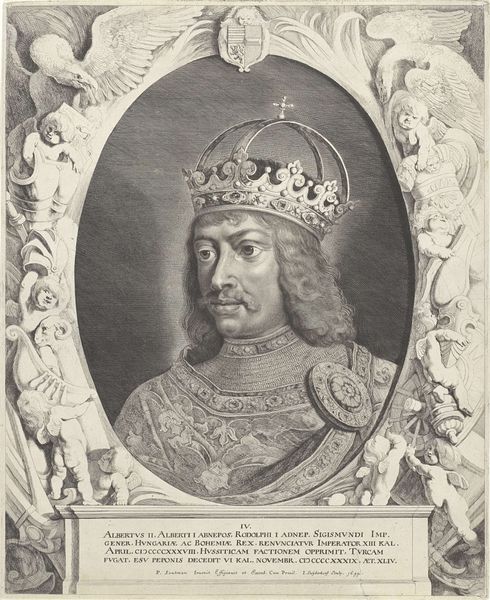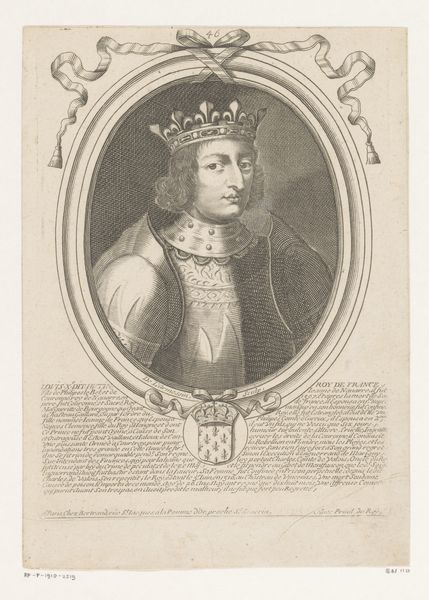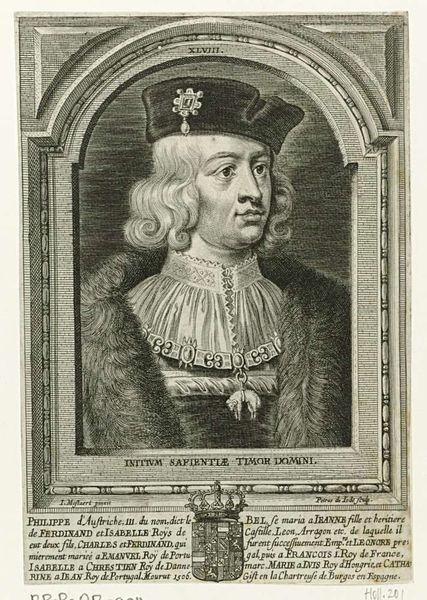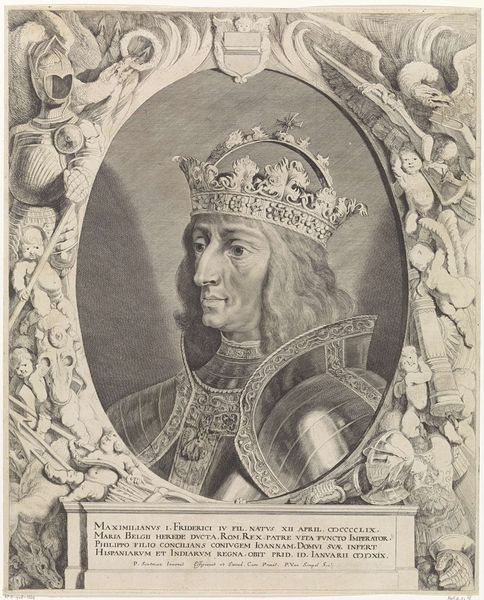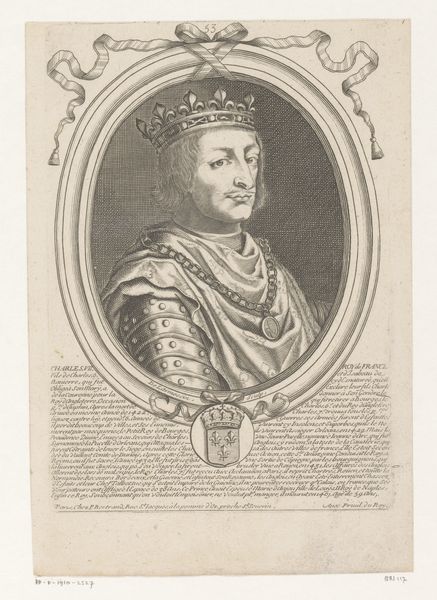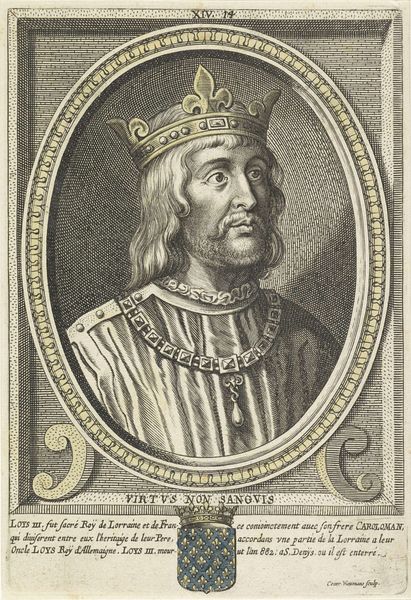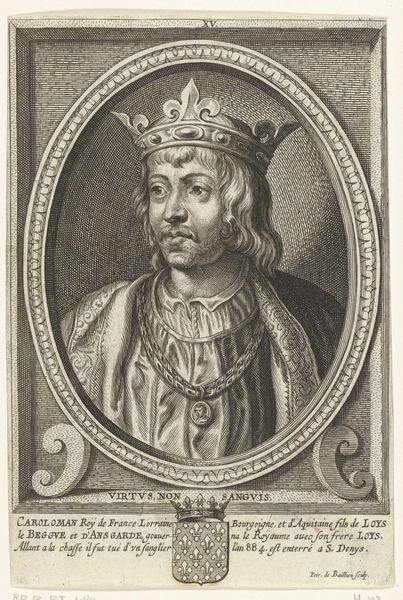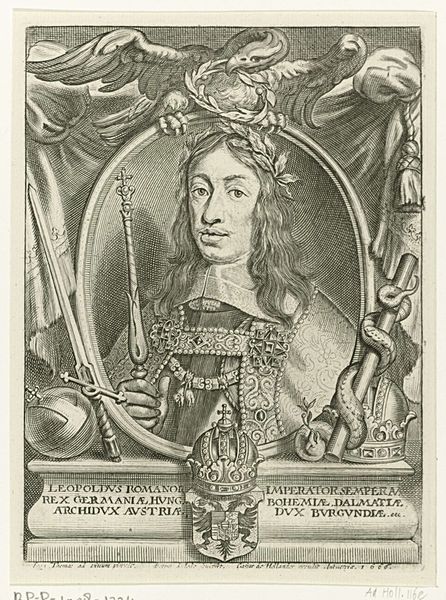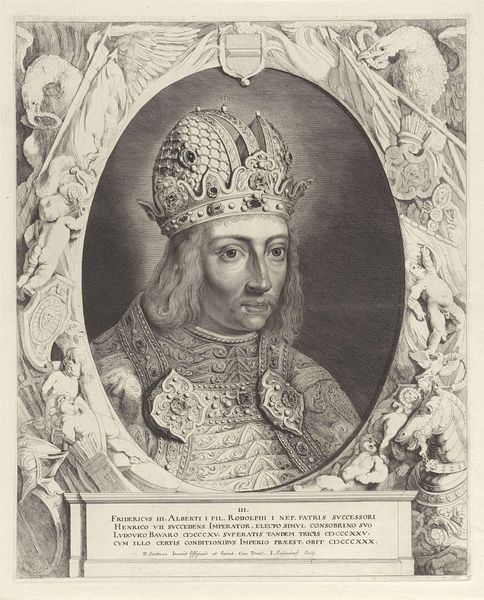
print, engraving
#
portrait
#
baroque
# print
#
old engraving style
#
pen work
#
history-painting
#
engraving
Dimensions: height 398 mm, width 288 mm
Copyright: Rijks Museum: Open Domain
Editor: So, here we have Cornelis Visscher's 1650 engraving, "Portret van Maximiliaan I van Habsburg," from the Rijksmuseum. The detail is incredible, all in black and white. I'm immediately drawn to Maximilian's intense gaze, but it feels… distant. How do you interpret this work? Curator: It’s fascinating to consider this print in the context of power and representation. What does it mean to depict Maximilian I, centuries after his reign? We have to acknowledge that the artist is creating a very specific image of leadership and authority at a later, equally turbulent time. Editor: So, you’re suggesting the image reflects the *artist's* contemporary context as much as Maximilian himself? Curator: Exactly! Think about it. The Baroque period was full of dramatic self-portrayals of monarchs meant to legitimize their power. Cornelis Visscher would have wanted to evoke that same sense of steadfastness. It begs the question: how does the artwork challenge, reaffirm, or completely ignore prevailing norms of power in the Netherlands? Editor: That’s interesting. So, the print isn't just a historical record, it's making a statement about power? Curator: Precisely. And notice the choice of engraving. Prints allowed for wider distribution, meaning this carefully crafted image could influence public perception more broadly. How do you think the choice of text included at the bottom of the print is intended to inform our perception of him? Editor: That text positions him as a leader of Belgium, as well as being tied to the Roman Empire. The artist certainly wasn’t trying to paint Maximilian I in a humble light. Thinking about it this way shifts the whole picture. I went in thinking this was just an antiquated picture. Thanks! Curator: Indeed! It serves as a powerful reminder that art isn't created in a vacuum, it echoes the social and political realities that form the work itself.
Comments
No comments
Be the first to comment and join the conversation on the ultimate creative platform.
